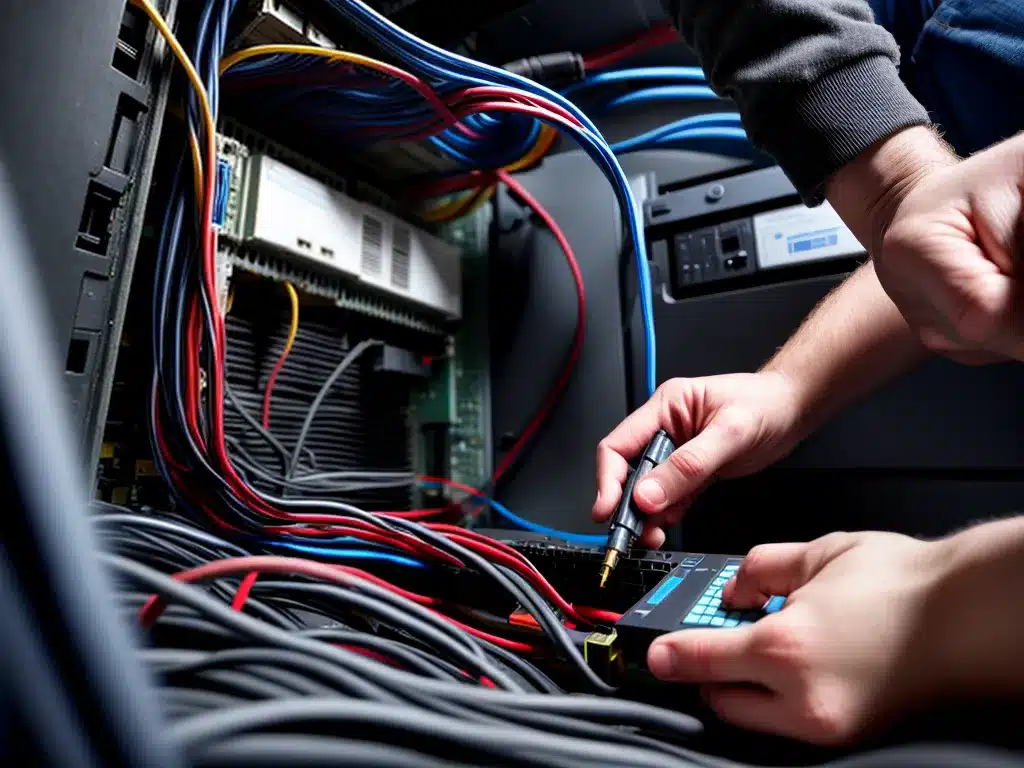
What is Dark Fiber?
Dark fiber refers to unused fiber optic cables that have been laid but are not currently being utilized. Dark fiber got its name because the cables do not have any light signals being transmitted through them. While the cables are in place, they sit dormant or “dark” until they are “lit” via connections to electronics and equipment that can send data through them.
Dark fiber provides a dedicated, high-capacity, low-latency communications pathway between locations. Since no equipment needs to be installed along the cable route, dark fiber provides almost unlimited bandwidth and growth capability for users. It offers complete control over your network connectivity needs.
Benefits of Dark Fiber
There are several key benefits to using dark fiber networks:
-
Dedicated bandwidth – Unlike shared networks, you have full access to the entire bandwidth of the fiber cable. This guarantees capacity for current and future needs.
-
Security – Dark fiber is a private network only accessible by the organization using it. This isolates your data and traffic from third parties.
-
Reliability – Because it’s a dedicated connection, dark fiber provides enhanced reliability and uptime. You are not dependent on any third-party networks.
-
Scalability – Dark fiber offers unlimited bandwidth potential to support growth. You can easily and cost-effectively scale capacity by upgrading the fiber terminal equipment.
-
Control – You have complete control over the fiber, including route, connectors, equipment used, and network configuration.
-
Future-proofing – Dark fiber provides a long-term solution, as the fiber cables themselves have a typical lifespan of 25 years or more. You can upgrade the electronics as faster technologies emerge.
Challenges with Dark Fiber
There are some potential challenges to be aware of with dark fiber:
-
Upfront costs – Building a dark fiber network requires large upfront capital expenditures to lay fiber optic cables over a wide area. Leasing dark fiber may have high costs too.
-
Installation and maintenance – You are responsible for installing and maintaining dark fiber lines. This requires hiring technicians to splice, terminate, and troubleshoot fibers.
-
Lit infrastructure – You need to purchase, install, and upgrade the electronics that light the fiber. This includes DWDM and optical transport equipment.
-
Expertise required – Successfully operating a dark fiber network requires in-house staff with specialized optical and network engineering skills.
-
Right-of-way access – You may need to secure legal right-of-way access from landowners and municipalities before laying new fiber paths. This can create logistical challenges.
Dark Fiber for Your Business
Dark fiber networks enable dedicated, high-capacity connectivity between your business locations, data centers, and other strategic sites. Here are some ways it can benefit your business:
- Connect your company’s headquarters to branch offices or manufacturing plants.
- Establish networks between your data centers for disaster recovery and data replication.
- Link up your business to partner ecosystems and supply chain networks.
- Gain direct access to Internet exchanges and cloud services.
- Provide dedicated connectivity to high-bandwidth services like data storage and backups.
Dark fiber gives you the scalable, secure, and customizable connectivity that high-growth businesses need. Companies in industries like media, finance, healthcare, research, and retail are using dark fiber for their mission-critical operations and infrastructure.
Evaluating Dark Fiber Leasing Options
One option to get started with dark fiber is leasing it through a provider that specializes in selling or leasing dark fiber connectivity. Some key considerations when evaluating dark fiber leasing:
-
Fiber routes – Look for metro and long-haul fiber routes that connect your locations. Avoid providers with limited geographic reach.
-
Bandwidth options – Look for “low water-mark” options that allow you to lease only the capacity you need now but scale quickly later.
-
Network monitoring – Seek dark fiber monitoring, maintenance and managed services to support your network.
-
Flexibility – Prioritize providers that offer flexible contract terms, bandwidth scaling, diverse routes, and customized solutions.
-
Pricing – Compare pricing models like IRUs (Indefeasible Rights of Use) and leased fiber to maximize value. Seek discounted long-term pricing.
-
Technical support – Choose a provider that offers 24/7 technical support and rapid response to any fiber cuts or performance issues.
Thoroughly evaluating potential dark fiber leasing partners will help you find the right connectivity solutions for your business needs and budget.
Conclusion
Dark fiber networks provide dedicated, secure, and scalable connectivity. Large enterprises are increasingly leveraging dark fiber to meet their bandwidth-intensive and latency-sensitive needs. While dark fiber has high upfront costs, it enables complete control over your organization’s private fiber optic network. Carefully weighing the benefits against the challenges will determine if deploying or leasing dark fiber is the right choice. With wise planning and preparation, your business can use dark fiber networks as a platform for long-term growth and competitiveness.












